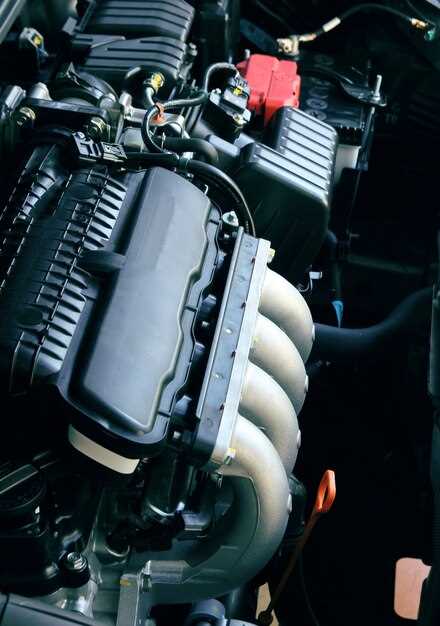How to Properly Maintain a Turbocharged Engine


A turbocharged engine provides a unique advantage in terms of power and efficiency, allowing vehicles to achieve higher performance without significantly increasing engine size. However, this enhanced performance comes with its own set of maintenance requirements. Proper care of your turbocharged engine is essential to ensure longevity and reliability while maximizing its output.
Understanding the Mechanism of a turbocharged engine can help owners appreciate the importance of routine maintenance. The turbocharger compresses incoming air, forcing more oxygen into the combustion chamber, which in turn increases power. Ensuring that all components of this system are functioning optimally is key to maintaining performance.
The first step in maintaining your turbocharged engine is regular oil changes with high-quality synthetic oil. This lubrication not only reduces friction but also helps in dissipating heat. Additionally, monitoring and replacing air filters ensures that clean air is directed into the turbocharger, preventing potential build-up of debris that could hinder performance.
A proactive approach to maintenance will not only enhance engine performance but also extend the lifespan of the turbocharger itself. Understanding and implementing these practices can lead to a more thrilling driving experience while keeping your investment secure and efficient.
Understanding Turbocharger Components and Their Functions
A turbocharger is a vital component in a turbocharged engine, designed to enhance performance by forcing more air into the combustion chamber. Understanding the various components of a turbocharger and their functions is essential for maintaining optimal engine performance.
Compressor Wheel: The compressor wheel is responsible for drawing in ambient air and compressing it before entering the engine’s intake. Its design and material enable it to efficiently increase air density, leading to a more potent combustion process.
Turbine Wheel: The turbine wheel harnesses exhaust gases produced during combustion. As these gases flow through the turbine, they spin it, which in turn drives the compressor wheel. This process effectively utilizes energy that would otherwise be wasted.
Center Housing and Bearing Assembly: This assembly serves as the foundation for the turbocharger, housing the turbine and compressor while allowing for smooth rotation. It also contains oil passages for lubrication, helping to reduce friction and heat build-up that could lead to component failure.
Wastegate: The wastegate regulates exhaust flow to the turbine wheel, controlling boost levels. It opens to divert exhaust gases away from the turbine when the desired boost pressure is reached, preventing over-boosting and potential engine damage.
Intercooler: Though not a part of the turbocharger itself, the intercooler plays a crucial role in cooling the compressed air before it enters the engine. Cooler air is denser, which increases oxygen content for combustion, thus enhancing performance and efficiency.
Blow-off Valve: This component releases excess pressure from the intake system when the throttle closes. This prevents compressor surge, which can damage the turbocharger and negatively affect engine performance by causing instability in boost levels.
By comprehensively understanding these components and their specific functions, engine enthusiasts can better appreciate the complexity of turbocharging systems and ensure their engines operate at peak performance.
Regularly Checking and Replacing Engine Oil
Amid the complexities of turbocharged engines, maintaining proper engine oil levels is fundamental for optimal performance. Engine oil lubricates the moving parts, reduces friction, and helps dissipate heat generated during operation. Over time, oil can degrade and lose its effectiveness, leading to increased wear on engine components.
Regularly checking engine oil involves monitoring both the oil level and its condition. To check the oil level, park the vehicle on a level surface, wait for the engine to cool, and use the dipstick to assess the oil level. If the oil is below the recommended range, it should be topped up immediately. Additionally, inspecting the oil’s color and consistency can provide insights into its condition. Fresh oil typically appears clear and amber, while dark, gritty, or milky oil indicates contamination or degradation.
Replacing engine oil is equally crucial. Most manufacturers recommend changing the oil every 3,000 to 7,500 miles, depending on the oil type and driving conditions. For turbocharged engines, synthetic oil is often preferred, as it withstands higher temperatures and provides better protection against deposits and sludge. Adhering to the manufacturer’s specifications regarding oil type and change intervals can significantly extend the life of the engine.
In summary, regular checks and timely oil changes ensure that the turbocharged engine operates efficiently and reliably. Neglecting this essential maintenance can lead to costly repairs and decreased performance. Establish a routine to monitor your engine oil, and always prioritize its optimal condition for sustained engine health.
Monitoring Boost Pressure Levels During Operation

Maintaining optimal boost pressure is essential for the performance and longevity of your turbocharged engine. Regularly monitoring boost pressure levels helps to ensure that the engine operates efficiently and avoids potential issues associated with over- or under-boosting.
To effectively monitor boost pressure, it is vital to invest in a reliable boost gauge. This instrument provides real-time feedback on the pressure being produced by the turbocharger. Placing the gauge in an easily visible location allows the driver to keep an eye on boost levels during operation, making it easier to react to any anomalies.
The ideal boost pressure can vary depending on the vehicle and turbo setup. Generally, most performance engines operate within a specific boost range, typically measured in psi (pounds per square inch) or bar. Consult the manufacturer’s specifications for the appropriate boost target for your engine.
Monitoring boost pressure becomes particularly important when making adjustments to the engine or turbo setup. Modifications such as changing the turbocharger, adding performance chips, or altering exhaust systems can significantly impact boost levels. Regularly checking boost pressure after such modifications ensures that the engine remains within safe operating conditions.
It is also crucial to pay attention to boost spikes during acceleration. Spikes, which are sudden increases in boost pressure, can indicate potential wastegate or boost control issues. Continuous spikes can lead to engine knock, resulting in severe damage. Identifying these spikes early allows for timely intervention.
In addition to real-time monitoring, conducting data logging during various driving conditions can provide valuable insights into boost pressure performance over time. Analyzing this data helps to reveal patterns, enabling drivers to identify when boost levels deviate from the norm.
Ultimately, maintaining the proper boost pressure not only enhances vehicle performance but also contributes to the overall health of your turbocharged engine. Regular monitoring is a crucial step in the maintenance process, ensuring that you achieve optimal performance and prolong the life of your engine.
Maintaining the Cooling System for Turbocharged Engines
Turbocharged engines generate significant heat due to the increased air and fuel intake, making effective cooling crucial for maintaining optimal performance and longevity. Regular maintenance of the cooling system helps prevent overheating and ensures the engine operates within its designed temperature range.
First, it’s essential to regularly check the coolant level. Low coolant levels can lead to inadequate heat dissipation, resulting in engine overheating. Inspect the coolant reservoir and radiator for any signs of leaks or corrosion. If low levels are detected, top off with the manufacturer-recommended coolant mixture.
Next, inspect the radiator and coolant hoses for any signs of wear or damage. Hoses should be flexible and free of cracks or bulges. Any compromised hoses should be replaced promptly to prevent coolant loss. Additionally, check the radiator for dirt or debris that can hinder airflow and cooling efficiency. A clean radiator is vital for optimal heat exchange.
The thermostat plays a critical role in regulating engine temperature by controlling coolant flow. Regularly test the thermostat to ensure it opens and closes at the correct temperatures. A malfunctioning thermostat can lead to either overheating or an engine running too cool, both of which are detrimental to performance.
Moreover, consider flushing the cooling system periodically as recommended by your vehicle’s maintenance schedule. Flushing removes sediments and old coolant, which can degrade performance and inhibit heat transfer. Refill with fresh coolant to maintain maximum efficiency.
Finally, ensure that the cooling fan and water pump are functioning properly. The fan should engage at the correct temperatures, and the pump must circulate coolant effectively throughout the system. Any issues with these components should be addressed immediately to prevent potential overheating.
Inspecting and Replacing Air Filters Periodically
Regular inspection and replacement of air filters are crucial for maintaining the optimal performance of a turbocharged engine. Air filters serve the essential function of preventing dirt, debris, and other contaminants from entering the engine, which can lead to reduced efficiency and potential damage over time. Ensuring a clean air supply enhances combustion, improves power output, and promotes fuel efficiency.
A dirty or clogged air filter can restrict airflow, causing the engine to work harder than necessary. This not only increases fuel consumption but can also lead to performance issues such as sluggish acceleration and poor engine responsiveness. Therefore, it is essential to periodically assess the condition of your air filters.
Here are some general guidelines for inspecting and replacing air filters:
| Action | Frequency | Notes |
|---|---|---|
| Visual Inspection | Every 5,000 miles | Check for dirt and damage; replace if overly dirty. |
| Replacement | Every 15,000 to 30,000 miles | Replace depending on driving conditions and manufacturer recommendations. |
| Performance Test | As needed | If engine performance drops, check filter condition. |
When performing an inspection, remove the air filter from its housing and hold it up to a light source. If light passes through easily, the filter is likely still effective. If heavy discoloration or blockages are apparent, it’s time for a replacement. Additionally, ensure that the air filter is installed correctly to prevent unfiltered air from entering the engine.
In summary, regular attention to air filter maintenance significantly impacts your turbocharged engine’s performance and longevity. By following these inspection and replacement guidelines, you can help ensure your engine operates efficiently and effectively.
Utilizing Quality Fuel for Optimal Engine Performance
Using quality fuel is essential for the proper operation and longevity of a turbocharged engine. The right fuel not only enhances performance but also contributes to engine efficiency and reliability. Here are some key points to consider:
- Octane Rating: Always choose fuel with the appropriate octane rating recommended by the manufacturer. Higher octane fuels resist knocking and allow turbocharged engines to produce more power without damaging components.
- Cleanliness: Quality fuels contain fewer impurities and detergents that help keep the engine clean. This minimizes the buildup of deposits on injectors and valves, maintaining optimal combustion.
- Fuels Additives: Look for fuels that include additives for improved performance. These can enhance stability, reduce friction, and prevent corrosion, contributing to a smoother operation.
- Seasonal Considerations: Use fuel tailored for seasonal conditions. Winter blends, for example, evaporate more easily to assist starting in cold weather, while summer blends are designed to reduce vapor lock.
- Fuel Type: Select the fuel type designed for forced induction engines. Premium fuels are often formulated with special additives that benefit turbocharged systems.
Inconsistent or low-quality fuel can lead to several issues, including reduced power output, poor fuel economy, and increased emissions. To maximize the performance of a turbocharged engine, consider maintaining the following practices:
- Always check and follow the manufacturer’s guidelines for the best fuel type.
- Regularly fill the tank with fresh fuel, avoiding old or stale gasoline.
- Consider using fuel system cleaners periodically to maintain injector cleanliness.
- Monitor fuel quality when using different gas stations or brands, acknowledging that not all fuels are created equal.
- Keep an eye on engine performance and be vigilant for any signs of knocking or poor acceleration.
By utilizing quality fuel, you ensure that your turbocharged engine maintains peak performance and efficiency, extending its life and enhancing your driving experience.
